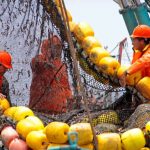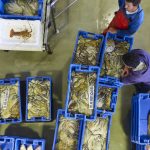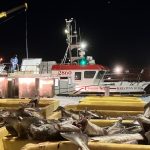With the site recommendations by the four English regional MCZ projects due to be published on 7th September, a significant stage in the process has now been completed. A new phase now begins. From the recommendations of the projects, the process now moves to the public bodies, government and the Minister to decide on sites to go forward for designation, accompanying conservation objectives and to consider the management measures required within the zones to meet these objectives.
Designation
Taking stock of what the MPA Fishing Coalition (MPAC) has achieved since it was formed in February of 2010, it is possible to say that MPAC has engaged Government and the statutory nature conservancy bodies at the highest levels and held them to detailed account. In doing so, it has forced Defra, the MMO and the statutory nature conservancy bodies to address a number of critically important questions that were previously in the shadows:
The rushed timeframe for the process of designating MCZs
Weaknesses in the fishing industry representation on the regional projects
The weakness of the science and knowledge base being used to make decisions on site selections.
The issue of displacement of fishing vessels from their customary fishing grounds
At the local level, representatives from the Coalition’s constituent bodies, including the NFFO, have worked hard against difficult odds to ensure that the final recommendations at least avoid the worst site selections. It is fair to say that these efforts have not removed all the possible dangers, given the scale of the task and the forces arrayed against them. These included working:
Within a timeframe that has precluded careful consideration and refinement of the site selections
Across multiple fisheries, again without adequate time for wider consultation
Within a framework which despite pretensions as a process of stakeholder engagement, was essentially a top-down application of a set of theoretical design rules, overseen by a science advisory panel, the membership and composition of which has been challenged by the Coalition for its lack of balance
With “stakeholders” some of whom actually have little or no stake in the outcomes and others who hold a political agenda to constrain fishing, with or without evidence
Within a process that tended to isolate dissent or ex
At least part of these problems can be traced back to the Marine and Coastal Access Act, passed into law in an atmosphere of feverish moral panic and which inadequately addressed how to achieve an appropriate balance between the marine environment and human use.
The need to protect rare and vulnerable marine life is understood and supported by all associated with the MPA Fishing Coalition. Nonetheless, the percentage targets required in the ecological network guidance provided by statutory nature conservation bodies to guide the selection process goes well beyond what is reasonable or justifiable, given that some estimates put the trawling footprint as covering between 5.4% and 21.4% of English and Welsh waters. Even “rare and threatened” features have already turned out to be quite common when the evidence has been gathered. Leaving aside the celebrated pink sea fan, once thought rare and now seen as “widespread”, sabellaria spinulosa reef (ross worm), also once thought rare and threatened turns out to be far from rare and thrives in areas that are subject to extensive disturbance.
At their worst, the Projects have deliberately selected sites in areas and on sea bed that forms the basis for sustainable fisheries – mud and the nephrops fishery being the worst example. The harmful economic, social and environmental consequences of this approach have been ignored.
One of the immediate tasks facing the Coalition is to right the wrongs in the recommendations or at least to ensure that they don’t go forward as candidate MCZs to become part of the designated network.








